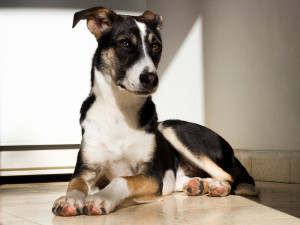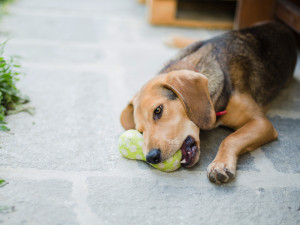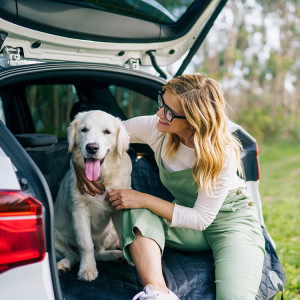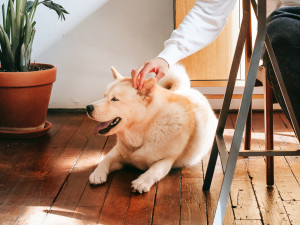Your Dog’s Food Aggression Isn’t Cute — Here’s How You Can Work On It
No longer associate feeding time with growling time.
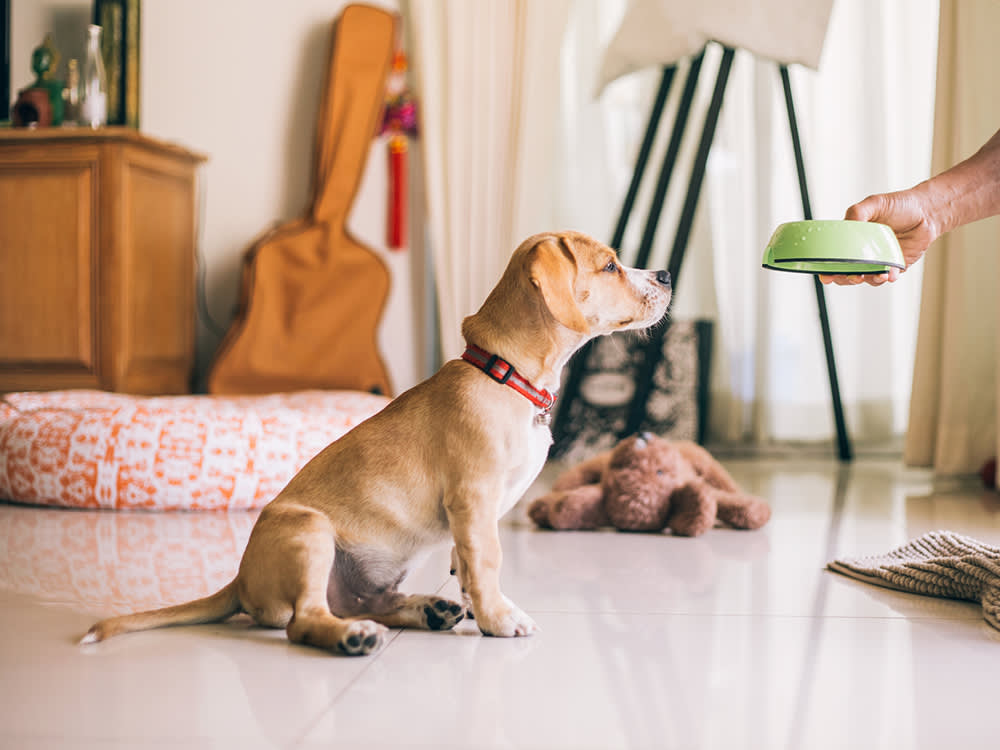
share article
Dogs are the best, but no one is perfect — especially when there’s a scrumptious piece of meat around. Some dogs growl, snap, or biteopens in a new tab when someone comes near their food. Known as food aggression, it’s a reaction that’s pretty common in dogs. It’s like they’re saying: “Hey! It’s mine! Back off!”
Food aggressionopens in a new tab in dogs can be a problem for humans because it increases your chances of getting bitten. The good news is, training can make your dog less likely to develop food bowl aggression. Here’s how.
Why Do Dogs Growl While Eating?
Food aggression is a form of resource guarding in dogsopens in a new tab, which is any behavior that a dog displays to convince others to stay away from something they consider valuable. Resource guarding may include behaviors such as growling, tooth displaying, stiffening, frantic eating, glaring, snapping, barking, and biting. Dogs commonly guard food, treats, bones, and rawhides.
How To Stop Food Aggression in Dogs
You want your dog to feel happy when you approach them while they’re eating, and even when you reach toward their bowl or take it away. Dogs who are happy about your approach are not going to growl or snap to get you to leave. If you regularly walk by a dog who is eating and toss a treatopens in a new tab to them, you are teaching them to anticipate a treat whenever you approach them at their food bowl. Once they learn that your approach predicts something good, they’ll be happy to see you coming.
Follow These Steps:
To begin, walk by your dog as they’re eating and toss a treat without stopping. Do this only one to two times during any feeding session and don’t do it every time your dog is eating. Overdoing it can cause a dog to feel irritable, the same way you feel in a restaurant when a waiter refills your water glass after every sip.
If your dog begins to look up in anticipation when you approach, they are ready for the next step, which is to walk toward them, stop, toss the treat, and then walk away.
The step after that is to reach towards the bowl, toss a treat, and then walk away.
The last step is to pick up the bowl, put a few extra treats into it, and then give it back to your dog before walking away. It usually takes a few days to several weeks to work through each successive step.
This technique can prevent food bowl aggression. If your dog is already behaving aggressively around their food, or if at any point in this process your dog shows signs of aggression or tension (such as stiffening, growling, eating faster, hovering over the bowl, snapping, or showing their teeth), stop and seek help from a qualified trainer or behaviorist.
The result of this process is a sentiment that’s a joy for me to hear: “My dog doesn’t growl over their food because I taught them to love it when I come near them during mealtime."

Karen B. London, PhD, CAAB, CPDT-KA
Karen B. London, Ph.D., is a Certified Applied Animal Behaviorist and Certified Professional Dog Trainer who specializes in working with dogs with serious behavioral issues, including aggression, and has also trained other animals including cats, birds, snakes, and insects. She writes the animal column for the Arizona Daily Sun and is an Adjunct Professor in the Department of Biological Sciences at Northern Arizona University. She is the author of six books about training and behavior, including her most recent, Treat Everyone Like a Dog: How a Dog Trainer’s World View Can Improve Your Lifeopens in a new tab.
Related articles
![Dog barking on the sidewalk in front of a pink wall]() opens in a new tab
opens in a new tabHow to Fix Your Dog’s Non-Stop Barking
You can live in a quiet house again.
![Dog Completing Tricks During Training In Park]() opens in a new tab
opens in a new tabHow to Make a Comeback After a Dog-Training Fail
Almost all new puppy parents fall at the first hurdle. Here, pro tips on picking yourself up.
![A blonde woman wearing a longsleeved green jumper and sneakers sitting in the open trunk of a SUV car with her arm around her Golden Retriever dog sitting next to her]() opens in a new tab
opens in a new tabHow to Make Your Dog’s Car-Crate Anxiety a Thing of the Past
Celebrity dog trainer Victoria Stilwell explains how to crate-train a dog with an intense fear of being in the car.
![Unrecognizable man sitting at desk petting his dog]() opens in a new tab
opens in a new tabHow to Pet a Dog — Yes, You Do Need Lessons
There’s a difference between being affectionate and being annoying.
